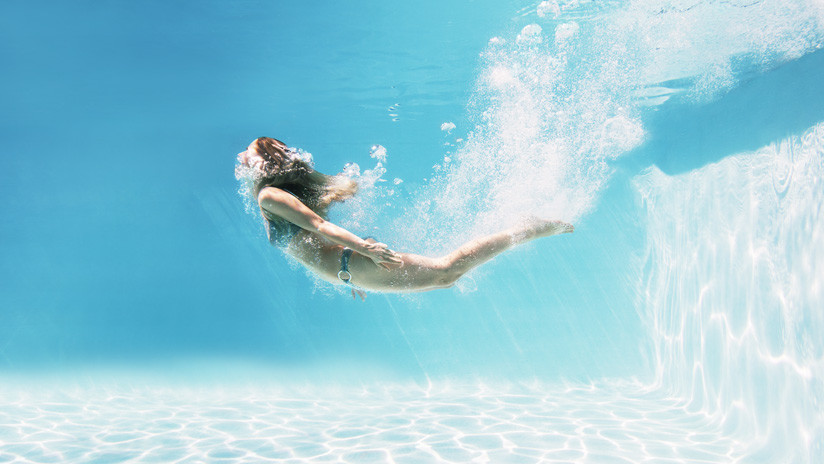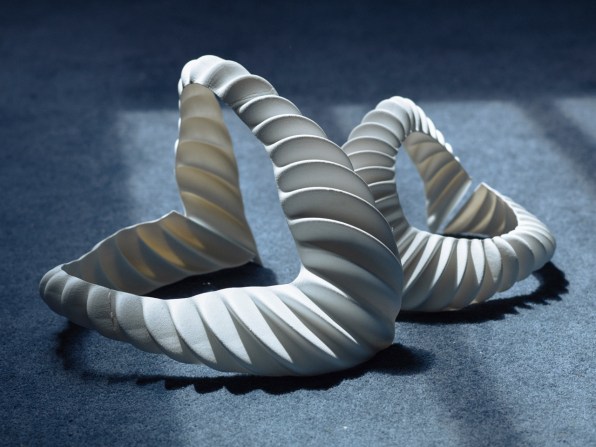Crean 'branquias' que
permitirían a los
humanos respirar
bajo el agua (FOTO)
Publicado: 18 ago 2018 01:49 GMT

Con impresoras 3D, científicos desarrollaron un dispositivo que, sumergido en agua, es capaz de generar oxígeno y permite expeler dióxido de carbono.

Imagen ilustrativa
Robert Daly / Gettyimages.ru
Síguenos en Facebook
El calentamiento global y el aumento del nivel de los océanos obligarán al ser humano a vivir mucho más en contacto con el agua. Por eso un grupo de científicos buscó y logró, con impresoras 3D, diseñar 'branquias' que podrían permitir a las personas hacerse 'anfibias' y pasar tiempo sumergidas bajo el agua, detalló Anet 3D Printer.
El dispositivo, bautizado 'Amphibio', consta de un chaleco y una máscara, hechos con un material 'superhidrófobo' que se coloca en el rostro y posibilita tomar del agua el oxígeno necesario para respirar y a la vez liberar dióxido de carbono, de manera similar a como lo hacen los animales acuáticos a través de sus branquias.
#ScripsNowfollowers I hope you enjoy my new healthcare tweet regarding an article that recently appeared in FastCompany titled, Amphibio is a 3D-printed shirt that lets you breathe underwater https://t.co/mSCOKauLYc— Mike Gould (@mikeg99999) 15 de agosto de 2018
Su creador es el diseñador y científico de materiales Jun
Kamei, del Royal College of Art, en el Reino Unido, quien
trabajó para ello junto al RCA-IIS Tokyo Design Lab.
Kamei explicó que su invento puede brindar "confort
diario a personas que pasan tanto tiempo en el agua
como en la tierra".
Aunque por el momento solamente se han hecho
algunas pruebas en pequeños escenarios, el próximo
paso es probarlo a gran escala. De acuerdo con las
previsiones, son necesarios al menos 32 metros
cuadrados de superficie acuática para solventar la
demanda de oxígeno de los seres humanos.
"En un futuro cercano, esto podría ayudar a permanecer
bajo el agua por más tiempo que en el buceo, y
con menos equipamiento",08.07.18
[Photo: Mikito Tateisi/courtesy Jun Kamei]
The globe is warming, and the seas are rising. By 2100, the flooding of coastal cities could displace billions of people whose coastline has been submerged. And while we might mitigate some of this through resilient urban planning, the human species itself might have to adapt to survive.

At least that’s the vision of material scientist and RCA student Jun Kamei. In conjunction with the RCA-IIS Tokyo Design Lab, he created Amphibio, a 3D-printed garment that functions as a giant gill, allowing the wearer to pull oxygen from an aqueous environment and breathe it.
Amphibio is made of a similar, patent-pending porous, hydrophobic material–what’s referred to as a biomimetic design. “In the sea water, you have dissolved oxygen molecules due to constant mixing by waves. The gill is able to replenish itself with oxygen whenever the oxygen in the gill is consumed, as it is porous and lets the oxygen molecules in the water travel across its membrane,” says Kamei. “Similarly, the carbon dioxide that builds up in the system can be dissipated in the surrounding water, using the same mechanism.”

Ridges across the garment increase its surface area to maximize its ability to pull in oxygen toward a face mask that covers the wearer’s nose and mouth. And while Kamei has demonstrated that the garment works, it doesn’t work well enough for the breathing needs of a human being. He says at their current efficiency, the gills would need to be 344 square feet to supply enough oxygen for a person. That’s not the size of a garment; that’s the size of a micro apartment, or the equivalent surface area of a few SUVs.
Can Kamei improve his own technology to be more efficient? Could we one day wear something like the Amphibio instead of large scuba tanks to go diving? “The material can further be tuned to improve its oxygen intake property,” he says when we ask, but doesn’t get more specific than that.
In the meantime, Kamei plans to continue developing on the technology. He’s he’s got precisely 82 years to figure it out.

No comments:
Post a Comment